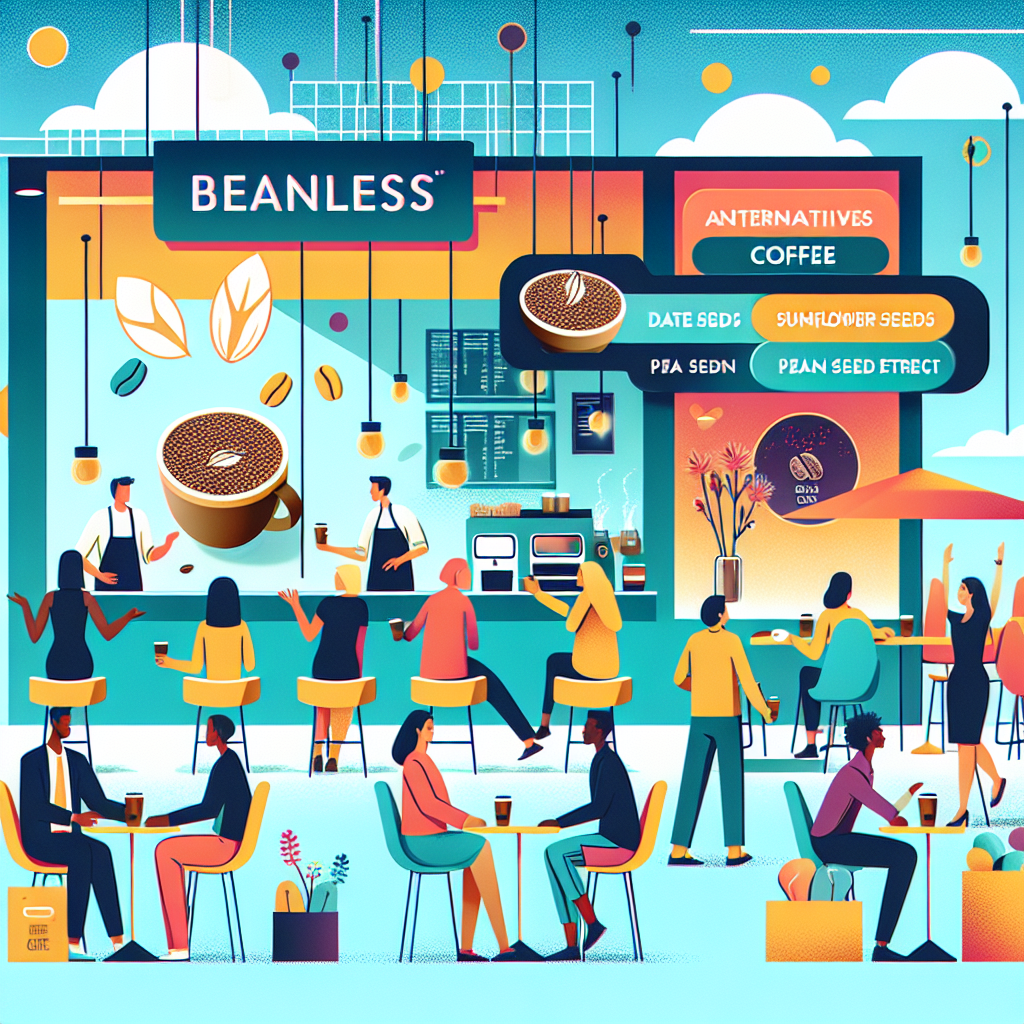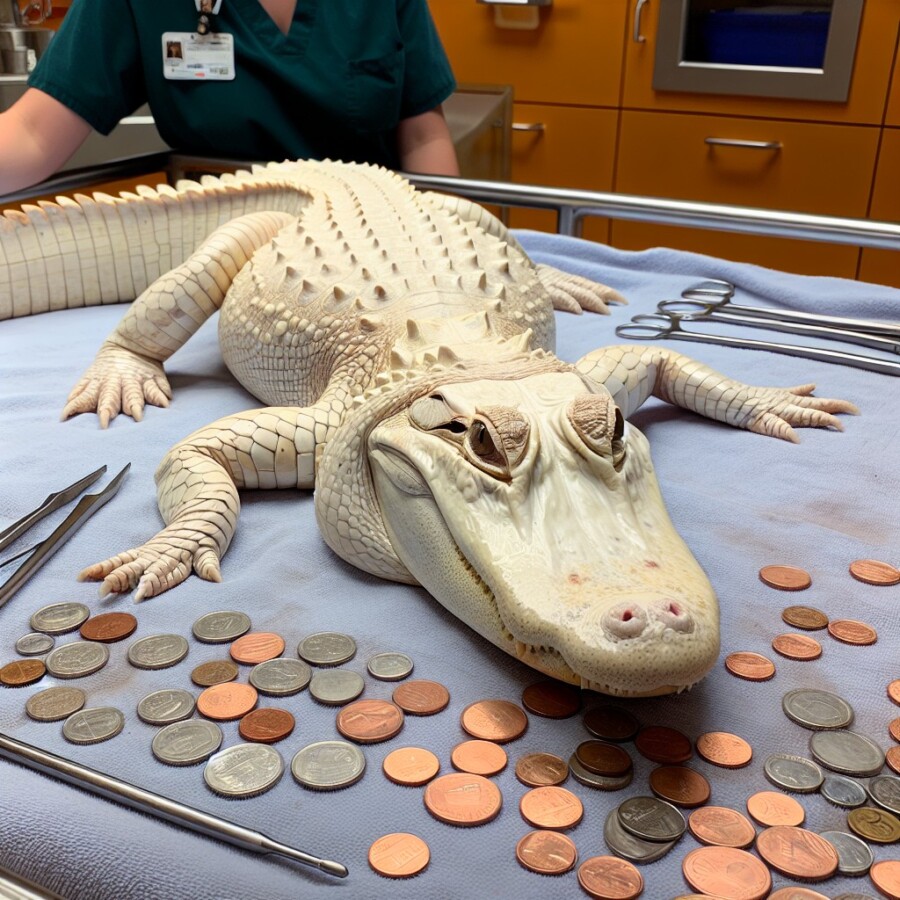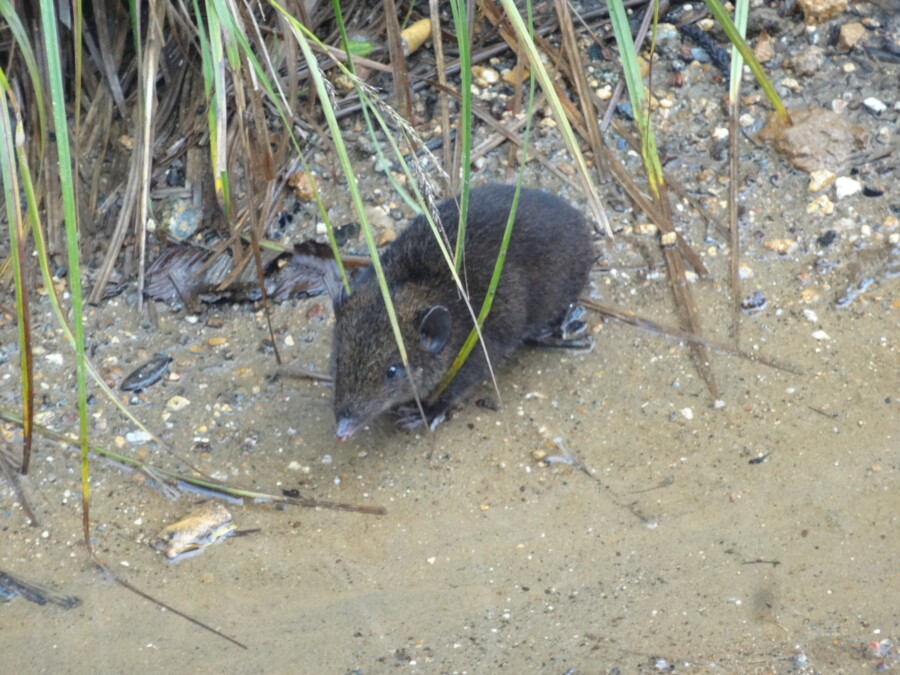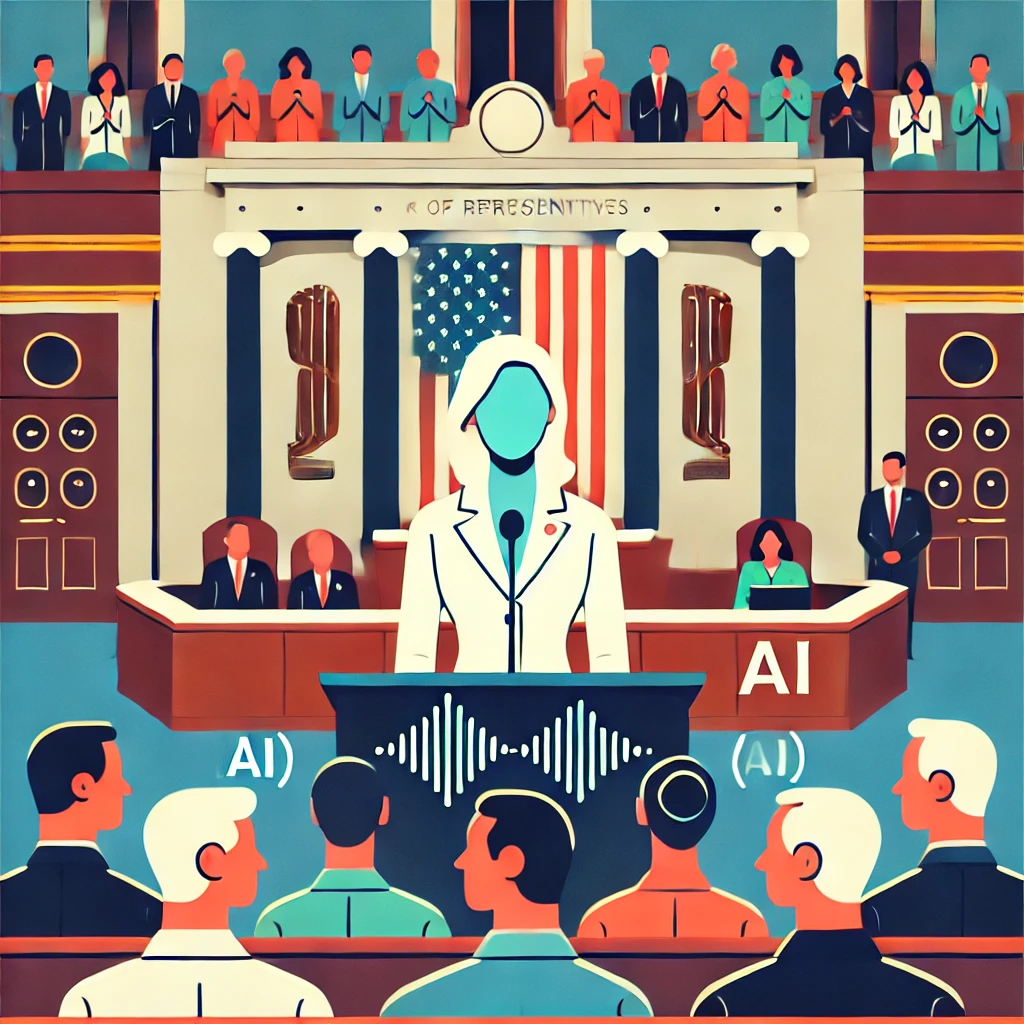A new trend in the coffee world is beanless coffee products. Atomo, a company from Seattle, is a leader in this trend. They use ingredients like date seeds, sunflower seed extract, and pea protein to make a coffee-like drink without using any coffee beans. The goal is to give people the taste, caffeine, and experience of regular coffee but in a more eco-friendly way.
Regular coffee farming contributes to deforestation, so beanless coffee is seen as a more sustainable choice. With more people drinking coffee worldwide and climate change affecting coffee farms, there’s a growing interest in alternative coffee options. Companies making beanless coffee believe their products might be cheaper than traditional coffee, especially as coffee prices go up globally.
While beanless coffee is a cool idea to help the environment, some worry about how it might affect coffee farmers and communities that depend on coffee growing for their income. Groups like Conservation International stress the need to support sustainable coffee farming and community projects in the coffee industry.
Companies like Atomo and Northern Wonder are leading the way in beanless coffee. They use ingredients like date seeds, ramón seeds, and chicory to make their products. Some companies are even looking into lab-grown coffee as another alternative. But challenges like making enough, getting approval, and getting people to try these new coffees still exist. The future of coffee and its impact on traditional coffee-growing areas is something to think about as beanless coffee becomes more popular.
Original news source: New beanless ‘coffee’ emerges but does it taste any good? (BBC)
🎧 Listen:
Slow
Normal
Fast
📖 Vocabulary:
| 1 | trend | A general direction in which something is developing or changing |
| 2 | extract | A substance taken from something else, often used for flavor or scent |
| 3 | eco-friendly | Not harmful to the environment |
| 4 | deforestation | The removal of trees from an area |
| 5 | sustainable | Able to be maintained or continued without causing harm |
| 6 | alternative | A different option or choice |
| 7 | globally | Involving the whole world |
| 8 | communities | Groups of people living in the same area or having a particular characteristic in common |
| 9 | Conservation | The protection and preservation of the environment |
| 10 | projects | Planned activities or tasks with a specific goal |
| 11 | ingredients | The parts or substances that make up a mixture or recipe |
| 12 | lab-grown | Created or grown in a laboratory setting |
| 13 | approval | Official permission or agreement |
| 14 | impact | The effect or influence of one thing on another |
| 15 | traditional | Based on long-established customs or beliefs |
Group or Classroom Activities
Warm-up Activities:
– Charades
Instructions: Divide the class into two teams. Write down words related to the article (e.g. coffee, beanless, eco-friendly, sustainable) on separate pieces of paper. One student from each team will come to the front and choose a word without showing their team. They will then have to act out the word without speaking while their team tries to guess. The team that guesses the most words correctly wins.
– News Summary
Instructions: Ask students to work in pairs. Each pair should read the article and then summarize the main points to their partner in their own words. Encourage them to focus on the key information such as the trend of beanless coffee, the reasons behind it, and the potential impact on the environment and traditional coffee farming.
– Vocabulary Pictionary
Instructions: Write down key vocabulary from the article (e.g. deforestation, sustainable, alternative) on separate pieces of paper. One student from each team will choose a word and have to draw it on the board while their team tries to guess the word. No writing or speaking allowed. This activity will help reinforce vocabulary from the article.
– Opinion Poll
Instructions: Create a list of statements related to the article (e.g. “I think beanless coffee is a good idea”, “I believe traditional coffee farming should be supported”). Have students walk around the class and ask their classmates for their opinions on each statement. They should record whether their classmates agree or disagree and be prepared to share the results with the class.
– Sketch It
Instructions: Divide the class into pairs. One student from each pair will describe a scene or concept from the article (e.g. a coffee farm, a cup of beanless coffee) without mentioning key words, while the other student has to draw what is being described. This will test their ability to communicate clearly and effectively in English. Afterwards, partners can compare their drawings with the original idea.
🤔 Comprehension Questions:
1. What are some of the ingredients used by Atomo to make their beanless coffee products?
2. Why is beanless coffee considered a more sustainable choice compared to regular coffee?
3. How is climate change affecting traditional coffee farms?
4. What concerns do some people have about the impact of beanless coffee on coffee farmers and communities?
5. What is the role of groups like Conservation International in the coffee industry?
6. Besides Atomo, which other company is mentioned as a leader in beanless coffee production?
7. What are some of the challenges faced by companies producing beanless coffee?
8. Why is it important to consider the future impact of beanless coffee on traditional coffee-growing areas?
Go to answers ⇩
🎧✍️ Listen and Fill in the Gaps:
A new (1)______ in the coffee world is beanless coffee products. (2)______, a company from Seattle, is a leader in this trend. They use (3)______ like date seeds, sunflower seed extract, and pea protein to make a coffee-like drink without using any coffee beans. The goal is to give (4)______ the taste, caffeine, and experience of regular coffee but in a more eco-friendly way.
Regular coffee farming contributes to (5)______, so beanless coffee is seen as a more (6)______ choice. With more people drinking coffee worldwide and climate change affecting coffee (7)______, there’s a growing interest in alternative coffee options. (8)______ making beanless coffee believe their products might be cheaper than traditional coffee, especially as coffee prices go up globally.
While beanless coffee is a cool idea to help the environment, some (9)______ about how it might affect (10)______ farmers and communities that depend on coffee (11)______ for their income. Groups like Conservation International stress the need to support sustainable coffee farming and community projects in the coffee industry.
Companies like Atomo and (12)______ Wonder are leading the way in beanless coffee. They use ingredients like date seeds, ramón seeds, and chicory to make their products. Some (13)______ are even looking into lab-grown coffee as another alternative. But (14)______ like making enough, getting approval, and getting people to try these new coffees still exist. The (15)______ of coffee and its impact on traditional coffee-growing areas is something to think about as beanless coffee (16)______ more popular.
Go to answers ⇩
💬 Discussion Questions:
Students can ask a partner these questions, or discuss them as a group.
1. What is beanless coffee and why do you think it is becoming popular?
2. How would you feel if your favorite coffee brand started making beanless coffee instead of using coffee beans?
3. Do you think beanless coffee is a good idea for helping the environment? Why or why not?
4. Have you ever tried any alternative coffee options, like beanless coffee or chicory coffee? How did it taste?
5. What do you think about the idea of lab-grown coffee as an alternative to traditional coffee farming?
6. Do you think beanless coffee products will actually be cheaper than regular coffee in the future? Why or why not?
7. How do you think beanless coffee might impact coffee farmers and communities that rely on coffee growing for their income?
8. Would you be willing to switch to beanless coffee if it meant helping the environment? Why or why not?
9. What are some other ways you can think of to make coffee production more sustainable?
10. Do you think traditional coffee companies should start investing in beanless coffee production? Why or why not?
11. How important do you think it is to support sustainable coffee farming and community projects in the coffee industry?
12. What do you think the future of coffee farming looks like with the rise of beanless coffee products?
13. Do you think people will be open to trying new coffee alternatives like beanless coffee, or do you think they will stick to traditional coffee? Why?
14. How do you think the taste of beanless coffee compares to regular coffee made from beans?
15. If you had the chance to try beanless coffee, would you? Why or why not?
Individual Activities
📖💭 Vocabulary Meanings:
Match each word to its meaning.
Words:
1. trend
2. extract
3. eco-friendly
4. deforestation
5. sustainable
6. alternative
7. globally
8. communities
9. Conservation
10. projects
11. ingredients
12. lab-grown
13. approval
14. impact
15. traditional
Meanings:
(A) A general direction in which something is developing or changing
(B) Groups of people living in the same area or having a particular characteristic in common
(C) Based on long-established customs or beliefs
(D) Official permission or agreement
(E) Involving the whole world
(F) A different option or choice
(G) The effect or influence of one thing on another
(H) The parts or substances that make up a mixture or recipe
(I) Able to be maintained or continued without causing harm
(J) A substance taken from something else, often used for flavor or scent
(K) Created or grown in a laboratory setting
(L) Not harmful to the environment
(M) The removal of trees from an area
(N) The protection and preservation of the environment
(O) Planned activities or tasks with a specific goal
Go to answers ⇩
🔡 Multiple Choice Questions:
1. What is Atomo known for in the coffee world?
(a) Growing the best coffee beans
(b) Inventing a new coffee machine
(c) Making beanless coffee
(d) Selling coffee accessories
2. Why is beanless coffee considered more eco-friendly?
(a) It doesn’t contribute to deforestation
(b) It requires more water to produce
(c) It uses more chemicals
(d) It has a higher carbon footprint
3. What is a concern some people have about beanless coffee?
(a) Its taste being too strong
(b) Its high caffeine content
(c) Its lack of popularity
(d) Its impact on coffee farmers
4. Which organization emphasizes the importance of supporting sustainable coffee farming?
(a) Conservation International
(b) World Coffee Association
(c) Coffee Farmers Union
(d) Global Coffee Consortium
5. What are some ingredients used in beanless coffee products?
(a) Coffee beans, sugar, and milk
(b) Tea leaves, chocolate, and cinnamon
(c) Date seeds, sunflower seed extract, and pea protein
(d) Orange peel, coconut oil, and almonds
6. What do companies making beanless coffee believe about their products?
(a) They will taste exactly like regular coffee
(b) They might be cheaper than traditional coffee
(c) They will be more expensive than regular coffee
(d) They will have less caffeine than regular coffee
7. What is another alternative to beanless coffee that some companies are looking into?
(a) Tea
(b) Energy drinks
(c) Hot chocolate
(d) Lab-grown coffee
8. What are some challenges facing the production of beanless coffee?
(a) Finding the right packaging, marketing, and distribution
(b) Making enough, getting approval, and getting people to try it
(c) Deciding on the perfect blend, roast, and grind
(d) Figuring out the best brewing method
Go to answers ⇩
🕵️ True or False Questions:
1. The goal of beanless coffee is to provide the taste, caffeine, and experience of regular coffee in a more eco-friendly way.
2. Traditional coffee farming contributes to sustainable farming practices, making beanless coffee a less desirable choice.
3. Beanless coffee products use ingredients like date seeds, sunflower seed extract, and pea protein as well as coffee beans.
4. Some companies are exploring lab-grown coffee as another alternative to traditional coffee.
5. Companies like Atomo and Northern Wonder are beginners in creating beanless coffee using ingredients like date seeds, ramón seeds, and chicory.
6. Some people worry about how beanless coffee might benefit coffee farmers and communities that rely on coffee growing for their income.
7. Atomo, a company from Seattle, is at the forefront of the beanless coffee trend.
8. Challenges such as production, approval, and consumer acceptance still exist for beanless coffee to become more popular.
Go to answers ⇩
📝 Write a Summary:
Write a summary of this news article in two sentences.
Check your writing now with the best free AI for English writing!
Writing Questions:
Answer the following questions. Write as much as you can for each answer.
Check your answers with our free English writing assistant!
1. What is Atomo, a company from Seattle, known for in the coffee world?
2. Why is beanless coffee seen as a more sustainable choice compared to regular coffee farming?
3. What are some of the ingredients used by companies like Atomo and Northern Wonder to make beanless coffee?
4. Why are some people concerned about the impact of beanless coffee on traditional coffee farmers and communities?
5. What are some of the challenges that companies making beanless coffee face in getting their products to be more widely accepted?
✅ Answers
🤔✅ Comprehension Question Answers:
1. What are some of the ingredients used by Atomo to make their beanless coffee products?
Atomo uses ingredients like date seeds, sunflower seed extract, and pea protein to make their beanless coffee products.
2. Why is beanless coffee considered a more sustainable choice compared to regular coffee?
Beanless coffee is seen as a more sustainable choice because regular coffee farming contributes to deforestation, while beanless coffee production does not require coffee beans.
3. How is climate change affecting traditional coffee farms?
Climate change is affecting traditional coffee farms by causing unpredictable weather patterns, which can lead to lower coffee yields and affect the quality of the coffee beans.
4. What concerns do some people have about the impact of beanless coffee on coffee farmers and communities?
Some people are concerned that the rise of beanless coffee products could negatively impact coffee farmers and communities that rely on coffee growing for their income.
5. What is the role of groups like Conservation International in the coffee industry?
Groups like Conservation International stress the importance of supporting sustainable coffee farming practices and community projects in the coffee industry to ensure the well-being of both the environment and the people involved in coffee production.
6. Besides Atomo, which other company is mentioned as a leader in beanless coffee production?
Northern Wonder is mentioned as another company leading the way in beanless coffee production, using ingredients like date seeds, ramón seeds, and chicory.
7. What are some of the challenges faced by companies producing beanless coffee?
Some challenges faced by companies producing beanless coffee include making enough product to meet demand, obtaining regulatory approval for their products, and convincing consumers to try these new coffee alternatives.
8. Why is it important to consider the future impact of beanless coffee on traditional coffee-growing areas?
It is important to consider the future impact of beanless coffee on traditional coffee-growing areas to ensure that the shift towards alternative coffee options does not harm the livelihoods of coffee farmers and communities that depend on coffee production.
Go back to questions ⇧
🎧✍️✅ Listen and Fill in the Gaps Answers:
(1) trend
(2) Atomo
(3) ingredients
(4) people
(5) deforestation
(6) sustainable
(7) farms
(8) Companies
(9) worry
(10) coffee
(11) growing
(12) Northern
(13) companies
(14) challenges
(15) future
(16) becomes
Go back to questions ⇧
📖💭✅ Vocabulary Meanings Answers:
1. trend
Answer: (A) A general direction in which something is developing or changing
2. extract
Answer: (J) A substance taken from something else, often used for flavor or scent
3. eco-friendly
Answer: (L) Not harmful to the environment
4. deforestation
Answer: (M) The removal of trees from an area
5. sustainable
Answer: (I) Able to be maintained or continued without causing harm
6. alternative
Answer: (F) A different option or choice
7. globally
Answer: (E) Involving the whole world
8. communities
Answer: (B) Groups of people living in the same area or having a particular characteristic in common
9. Conservation
Answer: (N) The protection and preservation of the environment
10. projects
Answer: (O) Planned activities or tasks with a specific goal
11. ingredients
Answer: (H) The parts or substances that make up a mixture or recipe
12. lab-grown
Answer: (K) Created or grown in a laboratory setting
13. approval
Answer: (D) Official permission or agreement
14. impact
Answer: (G) The effect or influence of one thing on another
15. traditional
Answer: (C) Based on long-established customs or beliefs
Go back to questions ⇧
🔡✅ Multiple Choice Answers:
1. What is Atomo known for in the coffee world?
Answer: (c) Making beanless coffee
2. Why is beanless coffee considered more eco-friendly?
Answer: (a) It doesn’t contribute to deforestation
3. What is a concern some people have about beanless coffee?
Answer: (d) Its impact on coffee farmers
4. Which organization emphasizes the importance of supporting sustainable coffee farming?
Answer: (a) Conservation International
5. What are some ingredients used in beanless coffee products?
Answer: (c) Date seeds, sunflower seed extract, and pea protein
6. What do companies making beanless coffee believe about their products?
Answer: (b) They might be cheaper than traditional coffee
7. What is another alternative to beanless coffee that some companies are looking into?
Answer: (d) Lab-grown coffee
8. What are some challenges facing the production of beanless coffee?
Answer: (b) Making enough, getting approval, and getting people to try it
Go back to questions ⇧
🕵️✅ True or False Answers:
1. The goal of beanless coffee is to provide the taste, caffeine, and experience of regular coffee in a more eco-friendly way. (Answer: True)
2. Traditional coffee farming contributes to sustainable farming practices, making beanless coffee a less desirable choice. (Answer: False)
3. Beanless coffee products use ingredients like date seeds, sunflower seed extract, and pea protein as well as coffee beans. (Answer: False)
4. Some companies are exploring lab-grown coffee as another alternative to traditional coffee. (Answer: True)
5. Companies like Atomo and Northern Wonder are beginners in creating beanless coffee using ingredients like date seeds, ramón seeds, and chicory. (Answer: False)
6. Some people worry about how beanless coffee might benefit coffee farmers and communities that rely on coffee growing for their income. (Answer: False)
7. Atomo, a company from Seattle, is at the forefront of the beanless coffee trend. (Answer: True)
8. Challenges such as production, approval, and consumer acceptance still exist for beanless coffee to become more popular. (Answer: True)
Go back to questions ⇧













